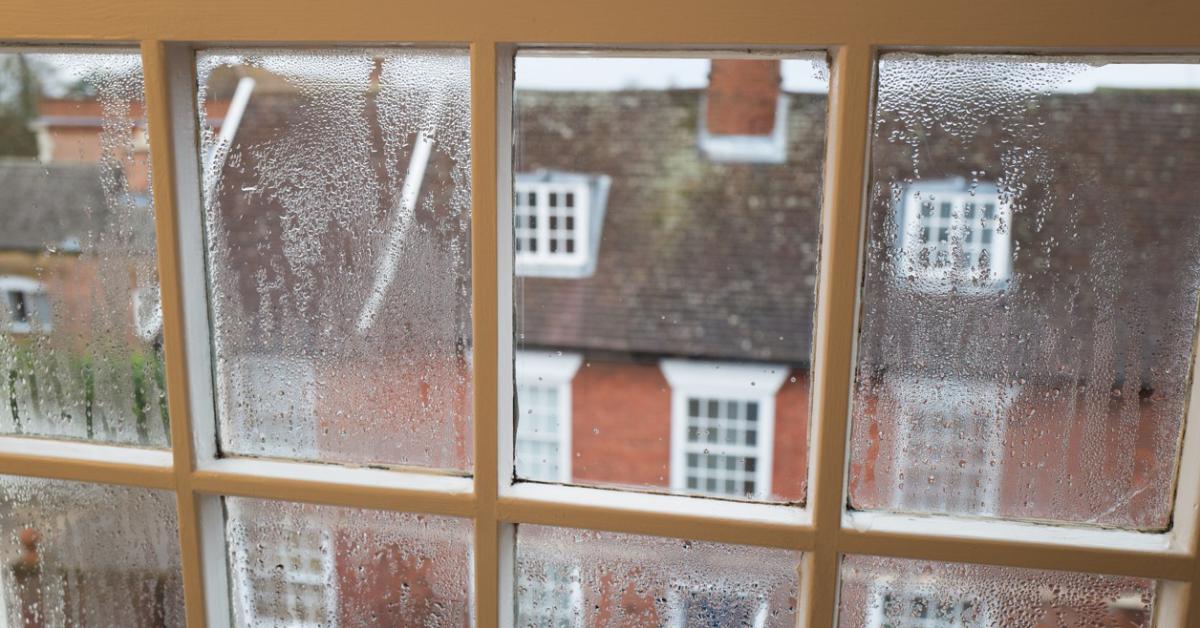

Damp, condensation and mould in properties - what landlords need to know
A common issue faced by landlords, especially in cold, winter months is damp, mould and condensation damage to their properties. According to a recent survey by Tenancy Deposit Scheme (TDS) amongst 2,000 landlords, two thirds have experienced mould in their property due to tenant neglect.
Damp may likely be caused by an inherent defect in the property or lack of maintenance and can be rising or penetrating damp. Condensation is often caused by higher-than-normal moisture levels that cannot escape due to poor insulation or lack of or inadequate heating. Mould then forms on walls and surfaces due to untreated condensation or damp.
Landlords need to be aware of the difference, the causes, the likely responsibility of each and how best to deal with each when they arise, to avoid disputes at the end of a tenancy. In this article, TDS offers advice on how to avoid tenancy deposit disputes in properties where condensation and mould problems arise and what landlords need to know.
What causes damp/condensation resulting in mould?
Damp:
- Lack of or failed damp proof course
- Defective guttering
- A leaking roof
- Leaking pipes
Condensation:
- Poor ventilation, particularly in bathrooms
- Wet/damp clothing drying
- Properties being too warm or too cold
How can landlords and tenants prevent mould?
We recommend landlords work with their tenants to ensure they are aware of how to prevent mould. This includes keeping the home clean and dry to reduce moisture levels, which in turn helps to prevent condensation and mould. Opening windows increases ventilation and allows moisture to escape and lowers the levels of carbon dioxide indoors. We also recommend landlords ask their tenants to:
- Maintain healthy humidity levels
- Keep indoor plants
- Not dry clothes indoors
- Use exhaust fans
- Wipe down condensation and areas when they become wet
- Use mould prevention products
In addition, it is important that landlords look out for signs of damp, condensation and mould during mid-term property inspections.
When is condensation/mould the landlord’s responsibility?
Communication with a tenant is key when mould issues arise so that a landlord can act quickly. A tenant should be aware of their obligation to report any issues that arise as soon as they become aware of a problem. Once a landlord becomes aware of damp, condensation or mould issues in one of their properties, they should take action as soon as possible to identify the cause and resolve the problem. It is essential the issue is resolved straight away as mould can cause serious health implications such as chest tightness and throat irritation.
Ideally a landlord should employ the services of a specialist contractor to assess the issues. Without this, it can be difficult to identify the cause and who is likely to be responsible for any subsequent damage. In cases where mould has been caused by rising or penetrating damp; the liability of the damage will fall to the landlord. This is because these issues are caused by problems with the property’s structure, which landlords are responsible for under the Landlord and Tenant Act.
Can landlords make a proposed deduction from the deposit for mould?
When mould has developed, that was not present at the start of the tenancy, landlords may be able to make a claim to deduct from the deposit to cover expenses needed to repair resulting damage. In a recent case study, the landlord claimed for redecoration due to the presence of mould on the bathroom walls at the end of the tenancy. It was clear from the check-in/inventory evidence at the start of the tenancy that the walls were free from signs of mould and the check-out report end of tenancy evidence supported the deterioration to the décor due to mould. However, the adjudicator will need to consider various other factors when assessing a claim for mould damage in order to be satisfied that an award can be made.
What do adjudicators look for?
In addition to looking at the check-in/inventory report and at the check-out report, to establish a clear deterioration in the condition of the property from the start of the tenancy, the adjudicator will look for evidence to show whether the mould issue was reported by the tenant during the tenancy and what steps, if any, were taken and for evidence to show the likely cause of the mould, for example a specialist contractor report. It may not always be the case that mould has formed due to the actions or inaction of a tenant, as it may have been caused by the lack of a functioning extractor fan or an inadequate sized trickle vent. Photographs can enhance case evidence enabling a clear comparison from the start and end of tenancy to be made and evidence the extent of any deterioration. It is important to note however that photographs should be used in addition to and not as a substitute for detailed written condition reports.
Comprehensive check-in/inventory and check-out reports can make all the difference in the likely success of a deposit dispute. Find out how to conduct a comprehensive inventory report in this free guide on the TDS website here.
For more information on damp, condensation and mould, TDS Charitable Foundation funded the ‘How do we stamp out damp, condensation and mould in the private rented sector?’ guide which offers more insight on best practice for the management of private rented housing, legal rights and obligations of those involved in the provision or management of private rented housing. To access the full guide, please click here.
The full results of the landlord mould survey will be available in the spring 2021 edition of TDS’ Letterbox magazine.
NRLA members can join the free Custodial deposit protection scheme and the low-cost Insured scheme from the government-approved Tenancy Deposit Scheme (TDS) at reduced rates via their dashboard. To find out more about the added benefits of joining TDS, click here.

